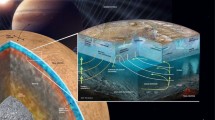Abstract
—By rupturing more than half of the shallow subduction interface of the Nazca Ridge, the great November 12, 1996 Peruvian earthquake contradicts the hypothesis that oceanic ridges subduct aseismically. The mainshock’s rupture has a length of about 200 km and has an average slip of about 1.4 m. Its moment is 1.5 × 1028 dyne-cm and the corresponding M w is 8.0. The mainshock registered three major episodes of moment release as shown by a finite fault inversion of teleseismically recorded broadband body waves. About 55% of the mainshock’s total moment release occurred south of the Nazca Ridge, and the remaining moment release occurred at the southern half of the subduction interface of the Nazca Ridge. The rupture south of the Nazca Ridge was elongated parallel to the ridge axis and extended from a shallow depth to about 65 km depth. Because the axis of the Nazca Ridge is at a high angle to the plate convergence direction, the subducting Nazca Ridge has a large southwards component of motion, 5 cm/yr parallel to the coast. The 900–1200 m relief of the southwards sweeping Nazca Ridge is interpreted to act as a "rigid indenter," causing the greatest coupling south of the ridge’s leading edge and leading to the large observed slip. The mainshock and aftershock hypocenters were relocated using a new procedure that simultaneously inverts local and teleseismic data. Most aftershocks were within the outline of the Nazca Ridge. A three-month delayed aftershock cluster occurred at the northern part of the subducting Nazca Ridge. Aftershocks were notably lacking at the zone of greatest moment release, to the south of the Nazca Ridge. However, a lone foreshock at the southern end of this zone, some 140 km downstrike of the mainshock’s epicenter, implies that conditions existed for rupture into that zone. The 1996 earthquake ruptured much of the inferred source zone of the M w 7.9–8.2 earthquake of 1942, although the latter was a slightly larger earthquake. The rupture zone of the 1996 earthquake is immediately north of the seismic gap left by the great earthquakes (M w ∼8.8–9.1) of 1868 and 1877. The M w 8.0 Antofagasta earthquake of 1995 occurred at the southern end of this great seismic gap. The M w 8.2 deep-focus Bolivian earthquake of 1994 occurred directly downdip of the 1868 portion of that gap. The recent occurrence of three significant earthquakes on the periphery of the great seismic gap of the 1868 and 1877 events, among other factors, may signal an increased seismic potential for that zone.
Similar content being viewed by others
Author information
Authors and Affiliations
Additional information
Received April 20, 1998, revised November 1, 1998, accepted November 6, 1998.
Rights and permissions
About this article
Cite this article
Spence, W., Mendoza, C., Engdahl, E. et al. Seismic Subduction of the Nazca Ridge as Shown by the 1996–97 Peru Earthquakes. Pure appl. geophys. 154, 753–776 (1999). https://doi.org/10.1007/s000240050251
Issue Date:
DOI: https://doi.org/10.1007/s000240050251




